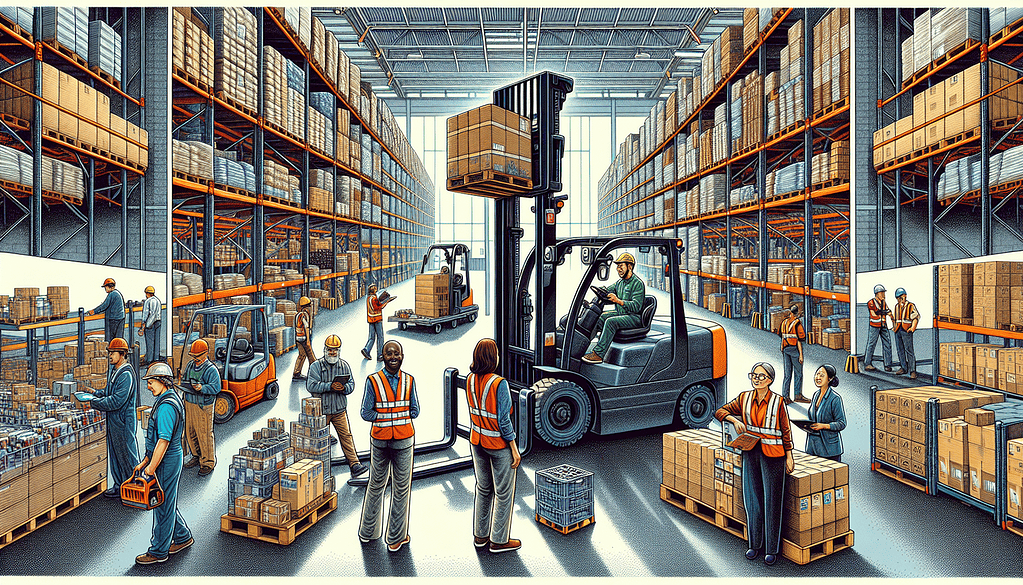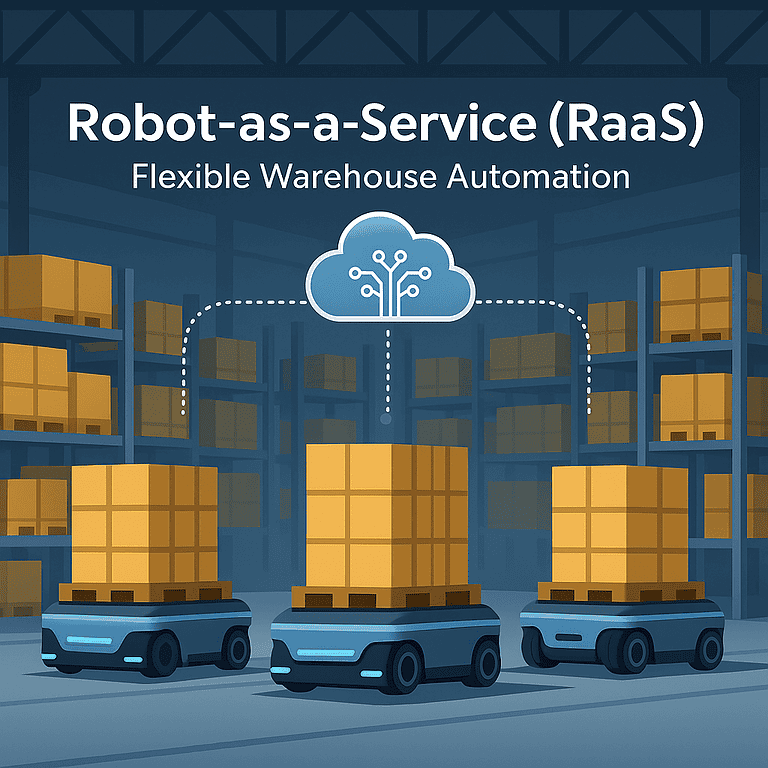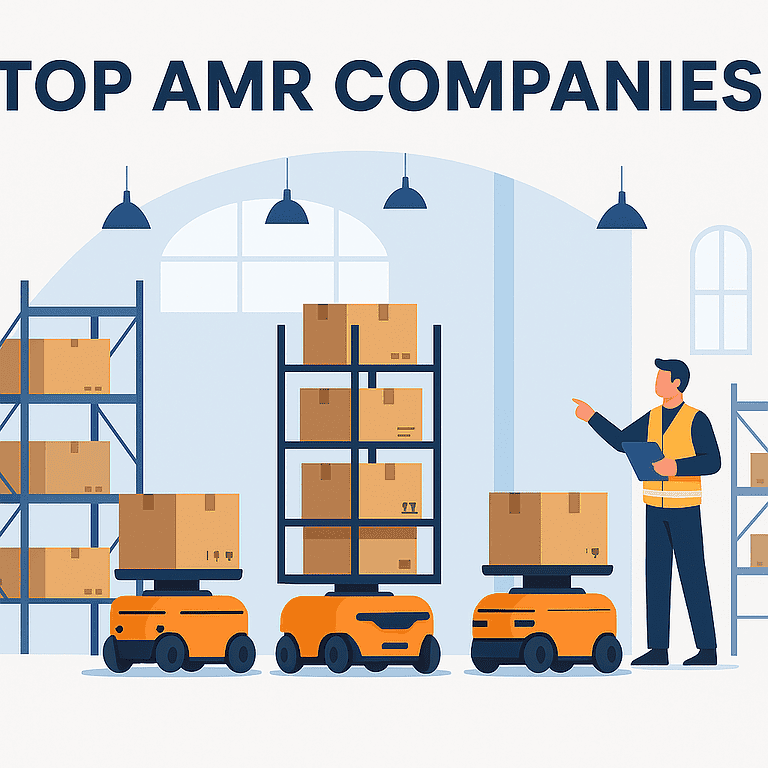The Best Tips for Renting Warehouse Space in 2025
Renting warehouse space depends on crucial elements such as size, location, cost, and lease terms. This article provides clear guidance replete with actionable advice and key insights into the market for businesses searching for an optimal warehouse fit for their needs when leasing a space.

Key Takeaways
- Understanding warehouse rental costs, size requirements, and lease terms is crucial for first-time renters to manage financial expectations and find a space accommodating immediate and future needs.
- It’s important to consider the location, size, and features of potential warehouse spaces, considering transportation links, local labor availability, and necessary amenities to ensure operational efficiency.
- Warehouses offer versatility for various uses beyond storage, such as event venues, co-working spaces, or productions, with amenities that enhance the space for the project’s requirements.
Decoding Warehouse Rental Basics
Leasing space in a warehouse, especially for those new to the process, can present challenges. Familiarizing oneself with fundamental aspects is an essential initial move.
This encompasses grasping the comprehensive rental cost that encapsulates all features into one simple fee, ensuring no unforeseen or concealed expenses.
Evaluating the warehouse’s dimensions is also crucial. The available units range from 250 square feet to an expansive 5,000 square feet.
As such, you’re guaranteed to locate a warehouse space offering just the right amount of square footage to seamlessly match your storage needs and business operations.
Lease Term Breakdown
Navigating the intricacies of lease agreements can be challenging for businesses acquiring warehouses for the first time. Lease terms for these sizable properties typically range between 20 and 40 years.
Although this commitment may seem overwhelming, it affords stability and foresight, which are vital for companies with their sights set on sustained expansion.
Costs Involved in Renting a Warehouse
Please consider the rental expenses involved with a warehouse, which can vary significantly depending on location. For instance, Southern California has experienced significant upticks in market rentals.
When establishing your budget, it is critical to consider the base rent and other costs of renting space, including service charges, estate fees, and business rates.
By November 2023, industrial spaces nationwide had an average rental rate of $7.60 per square foot. This suggests there was a deceleration in the pace of growth for these rates.

What to Look For in a Warehouse Lease
When leasing a warehouse, examine the rental agreement carefully, paying special attention to how the rent is structured, any extra fees that may be incurred, and the amount required for the security deposit.
Grasping these elements will help you effectively oversee your budgetary commitments. It is also crucial to rigorously evaluate the Heads of Terms before reaching an agreement.
This should encompass provisions regarding acceptable activities within the premises during private events, reparations for any property damage sustained, and established protocols for handling unexpected circumstances.
Thoroughly analyzing these points guarantees you are well-informed before committing.
Navigating the Search for Your Ideal Warehouse
A solid understanding of your needs is crucial when searching for the perfect warehouse space. Evaluate whether you need a full warehouse or just part of one, and consider specialized requirements like cold storage or dry storage areas.
Services like Peerspace can help streamline your quest by offering tools that filter through options to locate a space that meets your functional requirements and budgetary constraints. These platforms enable users to explore various warehouses located to their specifications.
Location Matters
Selecting the right location for a warehouse is an essential strategic choice. Ensuring it is close to key transport routes such as major roads and highways makes vehicle access easier and streamlines the shipping process.
A warehouse conveniently located near suppliers and customers reduces transportation expenses, boosting delivery efficiency.
Assessing skilled labor availability near your chosen warehouse site is important, as this factor can significantly impact operational effectiveness.
Sizing Up Your Space
Selecting a warehouse of the appropriate size is crucial for your business. It’s essential that it not only holds all of your existing inventory but also allows for an efficient layout and utilization of space.
Warehouse spaces typically measure an average of 15,000 square feet. They can vary greatly, with options between 200 and 5,000 square feet to suit businesses of different sizes.
When considering warehouse space options, one must plan for potential expansion by avoiding frequent moves or repeatedly expanding the current space as the business grows.
Features to Consider

When considering a warehouse, consider its key characteristics. Typically, necessary equipment such as pallet jacks, forklifts, and loading docks comes with the facility at the start of your lease.
Features like natural light and high ceilings can significantly improve everyday operations within the space.
Specifically, loading docks are crucial as they support seamless transactions involving goods by promoting effective shipping and receiving procedures.
The Perks of Small Warehouse Spaces
Emerging companies can gain various advantages from utilizing small warehouse spaces. These spaces help keep overhead costs minimal, facilitating a more manageable cash flow when dealing with smaller inventory quantities.
The efficient utilization of space is critical in small warehouses, frequently prompting the use of optimized arrangements like vertical storage solutions to maximize space.
These warehouses typically have a square footage between 5,000 and 15,000 square feet. They are perfectly suited for businesses with modest storage requirements and operate within industries where the demand for space doesn’t meet their needs.
Cost-Effectiveness
Typically, small warehouse spaces offer a more cost-conscious alternative for businesses due to their reduced costs compared with bigger warehouse options. By comparing various real estate choices and expenses in the desired area, it’s possible to pinpoint the most economical location for a warehouse.
These unique spaces grant businesses greater ability to manage their expenditures, which increases the overall cost-effectiveness of operating within such environments.
Flexibility and Scalability
Emerging businesses looking for agility in their operations can benefit significantly from the flexibility offered by small warehouse spaces. These warehouses are designed to cater specifically to newer businesses and offer lease terms that can be tailored to support business expansion, including:
- Scaling up operations without facing penalties or restrictions
- Securing periods of rent exemption
- Incorporating options for break clauses
- Setting out tenant responsibilities clearly
Such adaptable lease conditions allow these enterprises to remain nimble in response to market shifts while laying out a clear path for future development.
The design of small warehouses is conducive to modifications that align with a business’s trajectory, providing an ideal space solution that evolves with company needs.
Large Warehouse Solutions for Expanding Operations

Expanding operations can reap substantial rewards from the utilization of large warehouses, as they:
- Considerably augment a company to respond to growing customer needs.
- Deliver an edge over competitors in fulfilling omnichannel demands.
- Create chances to overhaul and upgrade current processes, enhancing staff productivity and efficiency.
Yet, it’s important to acknowledge that managing a large warehouse comes with unique difficulties. These include challenges with maintaining visibility across the expansive space, heightened requirements for employee movement within the warehouse, and the need for comprehensive lighting solutions designed specifically to cover additional space.
Accommodating High Volume Storage
Warehouses can optimize their storage capabilities by employing multi-level racking systems, mezzanine structures, and Automated Storage and Retrieval Systems (AS/RS), all of which leverage vertical space for improved efficiency in storing large quantities.
To facilitate efficient inventory management within a warehouse, mobile shelving units and storage cabinets can be tailored to handle a vast array of inventory sizes while streamlining access to goods and enhancing the overall organization of the warehouse space.
When considering where to situate a new warehouse facility, it is important to plan strategically with scalability in mind to have adequate capacity for growth to support future storage needs.

Warehouse spaces offer flexible solutions for different business needs. Here are some of the adaptive uses for warehouse properties.
- Establishing shared working environments
- Allocating areas for vehicle parking
- Renting out the storage space to various businesses
- Repurposing warehouses into venues for events or entertainment activities
- Utilizing warehouse space as storage solutions
- Transforming these spaces into fitness centers or sports facilities
- Acting as sites for production processes
With their adaptability, warehouses present numerous possibilities that can contribute greatly to the thriving of enterprises.
Organizational Strategies
Efficiency begins with organization. By adopting various workflow configurations such as U-shaped, L-shaped, or I-shaped layouts, warehouses can achieve greater efficiency and avoid congestion points.
Optimizing storage within the warehouse improves critical functions like picking, packing, and shipping—contributing to increased precision in order fulfillment and faster operations.
Minor organizational changes can immediately improve warehouse workflows without requiring a full-scale redesign of the current setup.
Engaging employees in planning the layout of the warehouse storage space may reveal minor yet significant modifications that bolster their productivity and enhance safety measures.
Incorporating Technology

Technology is instrumental in improving efficiency and accuracy and fostering effective communication and collaboration in warehouse operations. Some key technologies that can be used in warehouse operations include:
- Warehouse Management System (WMS): This system can greatly minimize errors and offer real-time, precise inventory data.
- Automated Inventory Control Systems: These systems can help automate inventory management processes and ensure accurate stock levels.
- RFID technology: This technology can enhance stock visibility and simplify inventory management.
By leveraging these technologies, warehouses can streamline their operations and improve productivity.
Advanced technologies like the Internet of Things (IoT) ensure continuous communication and coordination between systems, while implementing voice-activated technologies fosters a safer and more efficient working environment.
Insights on Warehouse Rental Trends
Keeping abreast of the newest developments in warehouse leasing can offer companies a strategic advantage. While expansion has been decelerated following the pandemic, the persistent demand for e-commerce has sustained industrial space requirements.
The disruption within worldwide supply chains has given rise to nearshoring practices, which has boosted industrial property needs across the United States.
Co-warehousing is becoming an increasingly popular option for storage and warehousing solutions designed to meet the demands of eCommerce enterprises, distribution firms, contractors, and entrepreneurs.
Assessing Warehouse Security Measures
Security considerations are paramount when renting warehouses. They act as a defense against various dangers, including internal and external attacks like sabotage, theft, and damage, which are crucial for preserving the integrity of personnel and assets within an enterprise.
Overlooking appropriate security measures may result in substantial operational setbacks and economic damages stemming from product theft, a common problem in supply chain management.
Implementing a series of best practices is critical. This includes creating an extensive safety and security checklist and multi-level security strategies to confront potential threats while decisively maintaining robust warehouse security. Plans will vary
Video Surveillance and Access Control

Installing CCTV monitoring and access control mechanisms can enhance warehouse security. The presence of surveillance cameras can discourage illegal activity within warehouse environments.
These cameras offer high-quality footage that can be used as prosecutable evidence, and for added protection, it can be uploaded to remote servers.
Implementing access control measures along with security cages plays an essential role in managing entry into specific areas of warehouses where items of significant value are kept.
Ensuring Safe Operations
Maintaining a secure environment within the warehouse is crucial for safeguarding employees and inventory. Robust security measures, including sufficient lighting and durable locks, are essential to enhance safety for personnel while deterring unwelcome access.
Strengthened safety protocols in warehouses create a safer work environment and elevate team morale and productivity. Dedicated safety practices are imperative to ensure seamless operations within the warehouse, directly impacting employees’ well-being.

Summary – Renting Warehouse Space
If you’re new to renting warehouse space, your business is growing, and finding the ideal warehouse space can be multifaceted.
By acquiring knowledge of fundamental aspects, thoughtfully choosing a location, capacity, and amenities, implementing effective organizational tactics and security protocols, and staying abreast of industry trends, you’ll be equipped to secure the perfect warehouse to bolster your business operations.
Frequently Asked Questions
What factors influence the cost of renting a warehouse?
When assessing warehouse rental options, consider the influence of location, ancillary costs, and the prevailing national average rental rate on the overall expense of leasing a warehouse.
What are some essential features to look for in a warehouse?
It’s crucial to sIt’s out a warehouse with amenities like high ceilings, docks specifically designed for loading and unloading, and abundant natural light. These contribute to streamlined operations and create an agreeable work atmosphere for employees.
What are the advantages of renting small warehouse spaces?
Renting warehouse spaces is beneficial as it provides a cost-efficient solution, necessitates the strategic utilization of space, and allows increased adaptability. This makes these types of warehouses an ideal choice for growing businesses looking for warehouse space.
How can businesses maximize storage capacity in large warehouses?
Businesses prioritizing space within vast warehouses can leverage multi-tier rack setups, incorporate mezzanine flooring solutions, and utilize Automated Storage and Retrieval Systems (AS/RS). These approaches enhance the effective use of space while boosting operational efficiency.
What security measures should be in place in a warehouse?
Implementing access control systems, robust locks, effective lighting, CCTV monitoring, and strict safety protocols are essential to guaranteeing security and safety within a warehouse.






